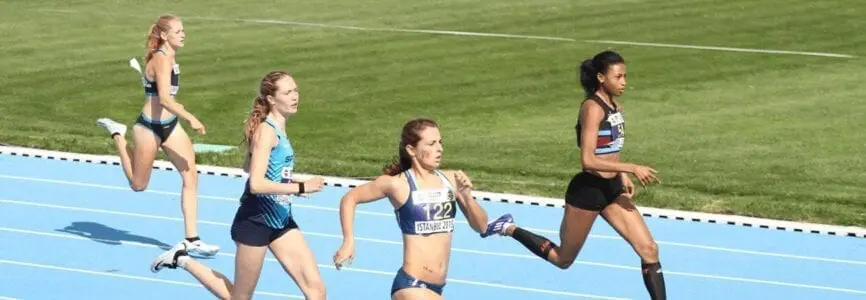Bioethics Forum Essay
Caster Semenya and the Challenges of Sports Brackets
“Sport is the display of the virtuous perfection of natural talents.” So writes Tom Murray, president emeritus of The Hastings Center, in his recent book Good Sport: Why Our Games Matter—and How Doping Undermines Them. If virtuous perfection of natural talents is what sports is all about, sports needs more people like Caster Semenya, the South African middle distance runner who has won multiple gold medals in the women’s 800 meters in international events. But Semenya has now been declared ineligible for any future women’s middle distance events unless she takes medications to suppress her testosterone levels. Semenya’s testosterone levels are naturally high, significantly higher than is typical for women, and too high, according to the Court of Arbitration for Sport, to compete in the women’s bracket for middle distance running.
Many athletes have natural advantages without getting disqualified. Probably, in fact, every elite athlete, compared to the rest of us, has one or more natural advantages—long legs, high blood oxygen levels, a high proportion of fast twitch muscles, or something else. Michael Phelps famously has a bunch of unusual traits that have helped him become a great swimmer. One important and difficult question about Semenya’s case is whether her advantage is distinctly different from other athletes’ natural advantages. It is, in the court’s view, because testosterone level is uniquely definitive of the women’s bracket. Leg length has no particular bearing on whether one qualifies for that bracket; testosterone level does. (As a side note, eligibility for the women’s bracket in middle distance running need not be the same thing as femaleness generally—in fact, it need not be the same as eligibility for the women’s bracket in other sports. The court is making a point connected to gender, but it is not telling us broadly what gender is.)
Answering the question about whether Semenya’s natural advantage is different from Phelps’s requires some science—what traits are important for middle distance running, and how do they correlate with women’s bodies? It also requires making a collective agreement about whether and where to draw boundaries, which is hard because the boundary will be drawn on a continuous curve and will therefore inevitably be somewhat arbitrary. The decision will be “essentially contested,” as philosophers say, meaning that no arguments one way or the other will be decisive once and for all, so that collective views will probably continue to change over time. Collective agreements on arbitrary boundaries are still possible, witness the idea of “adult”: we have various markers, ranging from ages 12 or 13 up to 25, for entry into adulthood, even though there’s no knock-down argument for any of them. Since the contrary arguments may at some point come to look more persuasive, we have to continue to listen to them. Certainly there are important and intelligent things to say against the decision in Semenya’s case.
Another question is about the very idea of having brackets. Why should sports have women’s brackets, or age brackets, or Paralympics for people with impairments—and within the Paralympics, multiple brackets for different kinds of impairments? And why ever discuss eligibility for brackets: should a man who just happens to be a little too slow to get on the podium in the elite men’s bracket be allowed to run in the elite women’s bracket? Can we really tell him, No, you have the wrong body?
Perhaps one way to defend the idea of having brackets is to return to the idea that sport is the virtuous perfection of natural talents and ponder the relationship between talent and limit. Arguably, talent cannot be comprehended without talking about limit. Talent is a comparative concept—to say that a person is talented is to say that she is unusual—and therefore it presupposes some understanding of the statistical limits of the relevant traits.
The implication is that the idea of extraordinary human talent operates against a background assumption of shared human impairment. We all have limits; in a sense, we all have impairments. Working against those impairments is the “virtuous perfection of natural talents.”
This seems to turn the idea of excellence in sports on its head. Some people think of adult (but not elderly) men’s sports as the standard against which everything else is defined, and many people seem to make a sharp divide between the Olympics and the Paralympics. In fact, the Paralympics are the standard: everyone in all sports is in a bracket defined by statistical variations in impairments—the men’s brackets included, which is why Murray thinks that doping undermines the significance of sports.
I grew up watching only men’s sports. But once I had a family, the sport I most cared about for many years was high school girls soccer. It’s different from high school boys soccer, much less professional men’s soccer; the girls don’t run as fast, kick as hard, or bang into each other as hard. But those differences were not important to me. (Also, the girls tend to pass a little better, I think, perhaps because they’re thinking more in terms of team play than individual glory.) I watched the play with an understanding somewhere in my mind about what is typical for high school girls. Sometimes somebody in the stands would say, “Whoa! She’s fast!,” and it would have been beside the point to respond that the boys are faster yet. We enjoyed the sport as much—in my case, more—than men’s sports because we were thinking in terms of the bracket. Having brackets necessarily limits our ability to celebrate diversity, insofar as brackets will never quite fit the nearly infinite assortment of human bodies, but it also expands our ability to celebrate diversity. Without them, I’d be stuck watching the men.
Gregory E. Kaebnick is a research scholar at The Hastings Center and editor of the Hastings Center Report.
45% of The Hastings Center’s work is supported by individual donors like you. Support our work.













